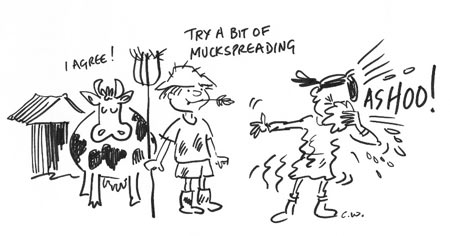|
|
|
|
It has long been know that children who grow up on farms are less prone to allergies and allergic asthma but it has not been clear just what it is that protects them. However The researchers from Bochum, Munich and Borstel, working the under the auspices of Dr Marcus Peters (Department of Experimental Pneumology at the RUB) analysed stable dust collected from farms in Germany, Austria, and Switzerland, and found that it is primarily made up of plant substances over 10% of which is arabinogalactan, a large sugar molecule. The researchers tested the reaction of the immune system of mice to potential allergens if arabinogalactan molecules are present. They found that the dendritic cells, which introduce damaging invaders to the immune cells and cause them to react, change their behaviour if arabinogalactan is present. They then produce a specific transmitter that suppresses the immune reaction although it is not clear receptors of the dendritic cells are responsible. Sugar receptors are generally important for the immune system to help it to identify foreign particles so this suppression of the immune system was not new to them. Some bacteria also make targeted use of this mechanism to reduce the immunoreaction of the host. Arabinogalactan does however only prevent the excessive alertness of the immune system -- the resistance to pathogenic agents continues to function normally. The researchers now plan to investigate whether arabinogalactan can be used as prophylaxis or whether it is also suitable for the treatment of allergies and allergic asthma. It is conceivable that arabinogalactan could be used as spray or nose drops because it is highly water-soluble. Marcus Peters, Marion Kauth, Olaf Scherner, Kirsten Gehlhar, Imke Steffen, Pia Wentker, Erika von Mutius, Otto Holst, Albrecht Bufe. Arabinogalactan isolated from cowshed dust extract protects mice from allergic airway inflammation and sensitization. The Journal of Allergy and Clinical Immunology, 2010; DOI: 10.1016/j.jaci.2010.05.011 Courtesy of Science Daily
First Published in September 2010 |













